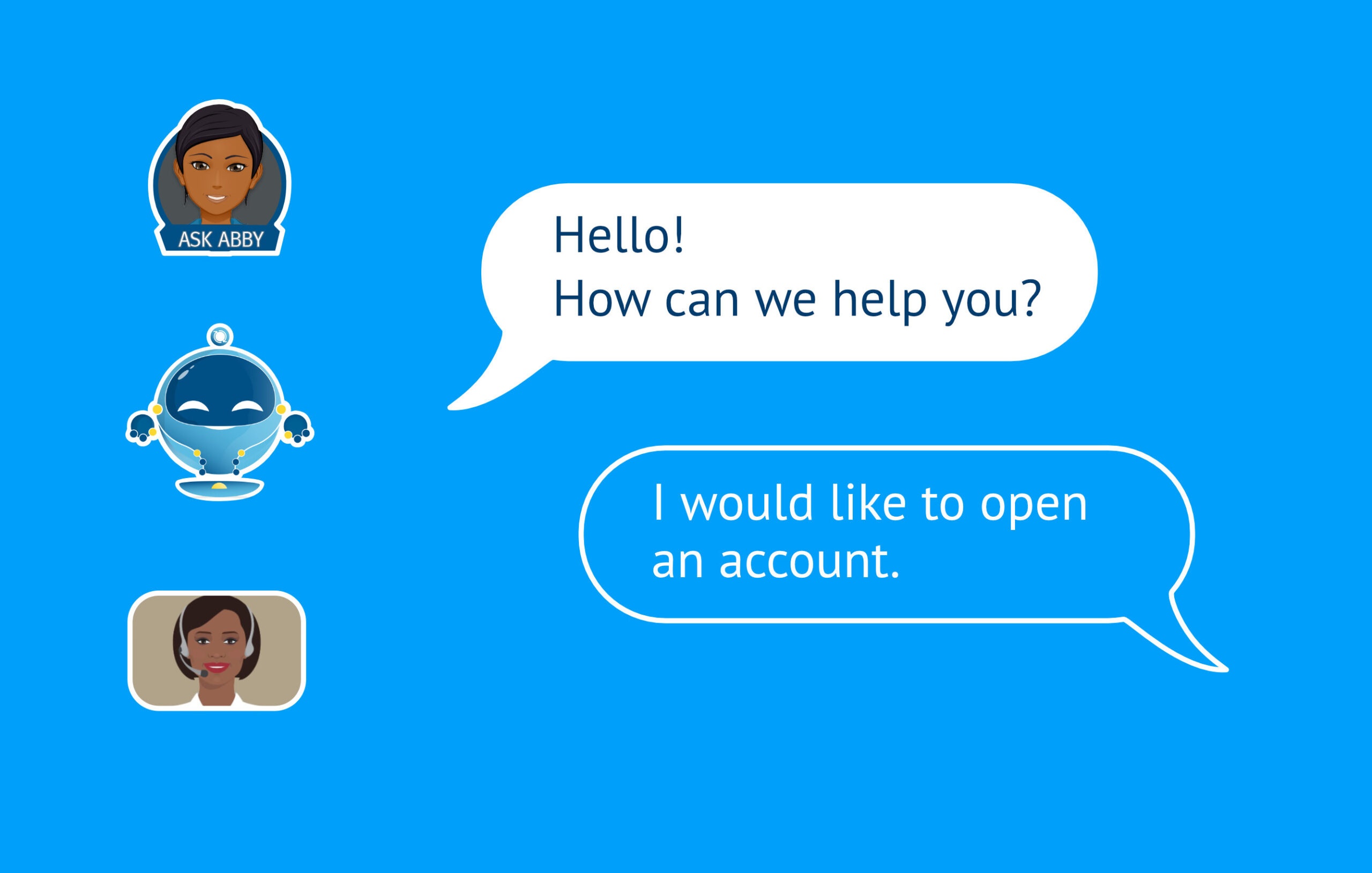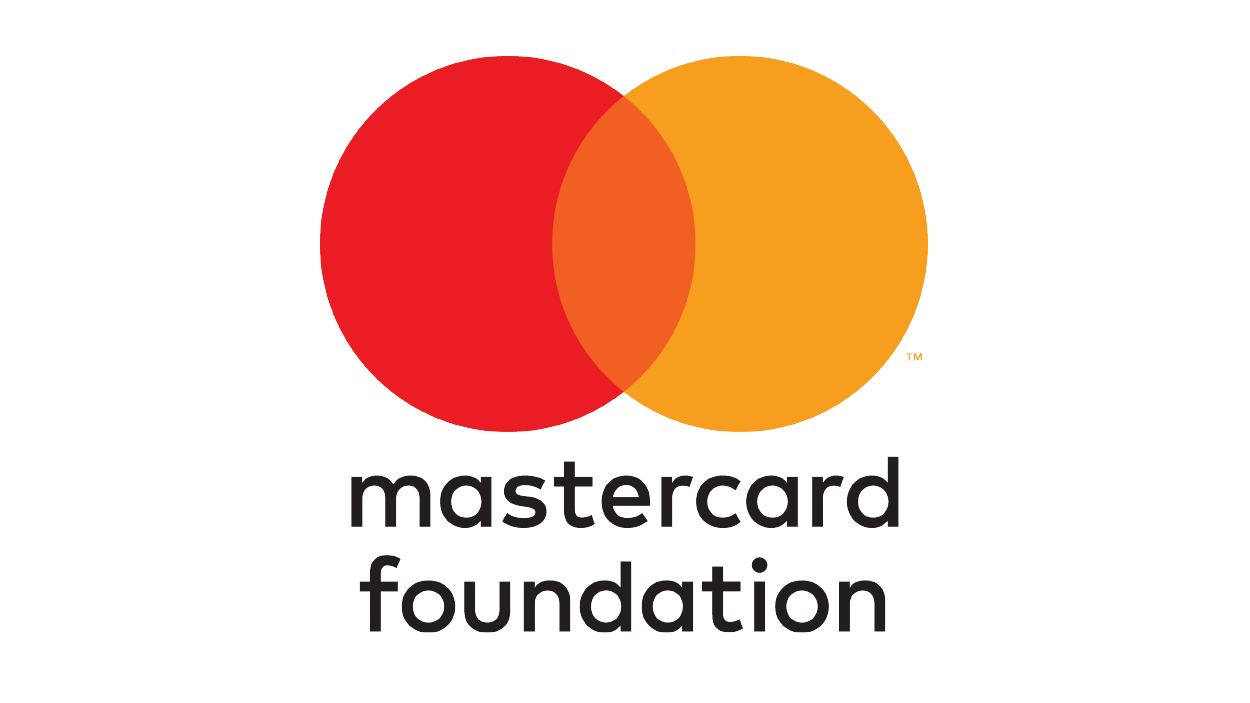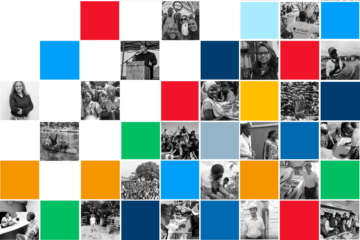Can Chatbots Drive Financial Inclusion? Seven Keys for Success

By Abenaa Addai
The use of chatbots in our banking operations has a high potential to drive customer inclusion: engaging underserved and low-income individuals is key for their access to and informed usage of financial services. Overall, Artificial Intelligence (AI) has revolutionized the way financial institutions operate – not only in the front office (conversational or chatbot banking) but also in the middle office (fraud detection and risk management) and back office (underwriting, document management) – and the impact on financial inclusion has been significant.
Simultaneously, the use of mobile phones and applications to interact with persons and businesses drastically increased, also in the emerging markets we operate in. Our clients use their phones for mobile money transfers and engage with social and communication platforms. They advertise their merchandise, connect with buyers, and conduct payments on platforms such as Facebook or WhatsApp. This makes it intrinsic to also access their banks through these media.
Chatbots are based on a conversation technology which allows humans to interact with digital devices as if they were communicating with a real person. Therefore, chatbot banking allows us to inform clients virtually with a “personal touch” and increases access to our products from remote locations. In the future, it could even play an educational or advisory role.
Our experience shows that chatbots work well in basic, self-service customer journeys, where the simplicity of the process and its repetitiveness makes it easy to automate requests. Chatbots are relatively easy to build and to customize, requiring less human and financial resources than other IT projects.
The formula seems simple: create a chatbot, advertise it and engage users. However, turning the idea of developing a chatbot into a successful business model involves converting customers to chatbot users: this requires a well-defined strategy. Here are seven main lessons we learned in building a chatbot strategy for financial inclusion in cooperation with our partners Mastercard Foundation and CDC.
Lesson 1: Concentrate Services on Client Needs
Although it is tempting to automate a series of business activities in a single bot, the more attenuated the scope, the higher the likelihood that the bot will interact with customers successfully. It is essential to focus strongly on the customer experience (simplicity and intuition of communication flows) when designing the user interface.
Lesson 2: Develop a Deep Understanding of Your Customers
A successful bot strategy begins with developing a deep understanding of your customers’ behavior, pain points and probable chatbot usage: unveiling changing customer requirements, identifying specific demands of customer segments as well as focusing on the specific needs of women when designing the chatbot user story. A successful strategy will seek to introduce a bot into the environment as part of an overall channel strategy. The goal is not to replace existing channels but instead to provide a succinct way for customers to interact with the bank and get quick, accurate results.
Lesson 3: Use Education-Based Marketing to Drive Adoption
A strong effort of combined marketing and client education is necessary to enhance customer trust and encourage communication with a chatbot. Many clients are still in the initial phase of digital readiness and feelings such as intimidation, unfamiliarity, and difficulty of using digital technology heavily influences chatbot usage, even on their preferred channels. In addition, many clients stick to tried and tested methods of communication with the bank, such as phone calls, or physically visiting a branch. Involving front line staff in personal coaching of clients and the use of educational videos helps familiarizing clients with the functionalities of the chatbot. This educational approach shares knowledge with the purpose of building trust thereby adding value to the customer journey.
Lesson 4: Consider All Pros and Cons of Third-Party User Platforms
Not always will the most widely used social media platform deliver the best customer experience. Banks need to assess how well the social media platform adapts to their business model and communication with their clients. Whilst customers may already be acquainted to usage and in some phones popular platforms are already preinstalled (like WhatsApp or Facebook), considerations like costs, data security and privacy, reliability, customizability, and limitations in push and pull communication must be carefully evaluated. Overall, using social media platforms subjects banks and their clients to third party policies and pricing.
Lesson 5: Clarify Ownership at the Eve of the Project
A product owner should be assigned during the concept phase of the project with the key responsibility of maximizing the value of the chatbot. The chatbot aims at improving customer experience and/or facilitating access to the bank, and the ownership should be placed in the hands of the leader of customer experience. Clear governance and management of the project team is part of the success of the chatbot. Its ability to function efficiently increases if different departments are brought into the team and are given a clear mission for successful implementation.
Lesson 6: Lay an Emphasis on Internal Marketing and Staff Engagement
The chatbot aims at changing the way in which the bank interacts with its customers and will automatically change the tasks and performance criteria of front-line staff. Staff should use the chatbot as an effective tool in communication with clients. Introducing the chatbot becomes a highly interdisciplinary process of change requiring the cooperation and commitment of almost all areas of the bank. Engaging staff in the development process – for example through an early internal pilot of the chatbot – increases their acceptance and approval of the innovation and brings valuable insights. Assigning chatbot brand ambassadors at different levels of the bank as well as requiring staff to personally help clients install and run through the functions of the chatbot increases their adoption. Continuity in internal staff engagement is important to drive usage and a structured approach helps to gather feedback which serves to improve the chatbot.
Lesson 7: Streamline Processes for Fast Responses
Replies need to be instant on chatbots: onboarding needs to be fast and frictionless, otherwise clients loose interest, forget their passwords and finally drop out. Clients expect instant replies when working with chatbots where services are automated. To remain attractive, the speed of reaction to customer requests must be higher than on alternative (non-digital) channels. Sophisticated customer engagement and lead management tools such as chatbots require efficiently organized workflows able to retain leads until they become customers and to keep existing customers satisfied.
The Partners

AccessHolding operates a network of Network Financial Institutions (NFIs) that offer responsible products and services tailored to the needs of small businesses and underserved parts of the population in developing and transition countries. In the long run, AccessHolding envisions an inclusive financial sector that improves people’s livelihoods, drives local economic growth and job creation, and is built on equal rights and gender equality. An impact measurement framework tracks the progress towards our impact goals. AccessHolding’s strategic management support includes broad-based capacity building through the AccessCampus corporate academy, comprehensive network-wide e-learning modules, and the steering of strategic projects in the areas of digitalization and technology.

The Mastercard Foundation works with visionary organizations to enable young people in Africa and in Indigenous communities in Canada to access dignified and fulfilling work. It is one of the largest, private foundations in the world with a mission to advance learning and promote financial inclusion to create an inclusive and equitable world. The Foundation was created by Mastercard in 2006 as an independent organization with its own Board of Directors and management.

CDC Group is the UK’s development finance institution established in 1948. It has been at the forefront of supporting companies that help poor countries grow for the last 70 years. CDC Plus is a technical assistance and support facility, funded by UK aid from the British government, which aims to make a lasting difference to the lives of under-served groups – by increasing economic opportunity, improving standards of living and creating a more sustainable environment. CDC Plus set up two dedicated COVID TA facilities in March 2020: the ‘Business Response Facility’ and the ‘Emergency Technical Assistance Facility’. These provided grants and advisory support to help companies adapt their business processes and delivery models to a new normal and scale up innovative solutions to address basic needs of vulnerable and underserved people during the pandemic.
The full Chatbot Study with more details can be downloaded below.


